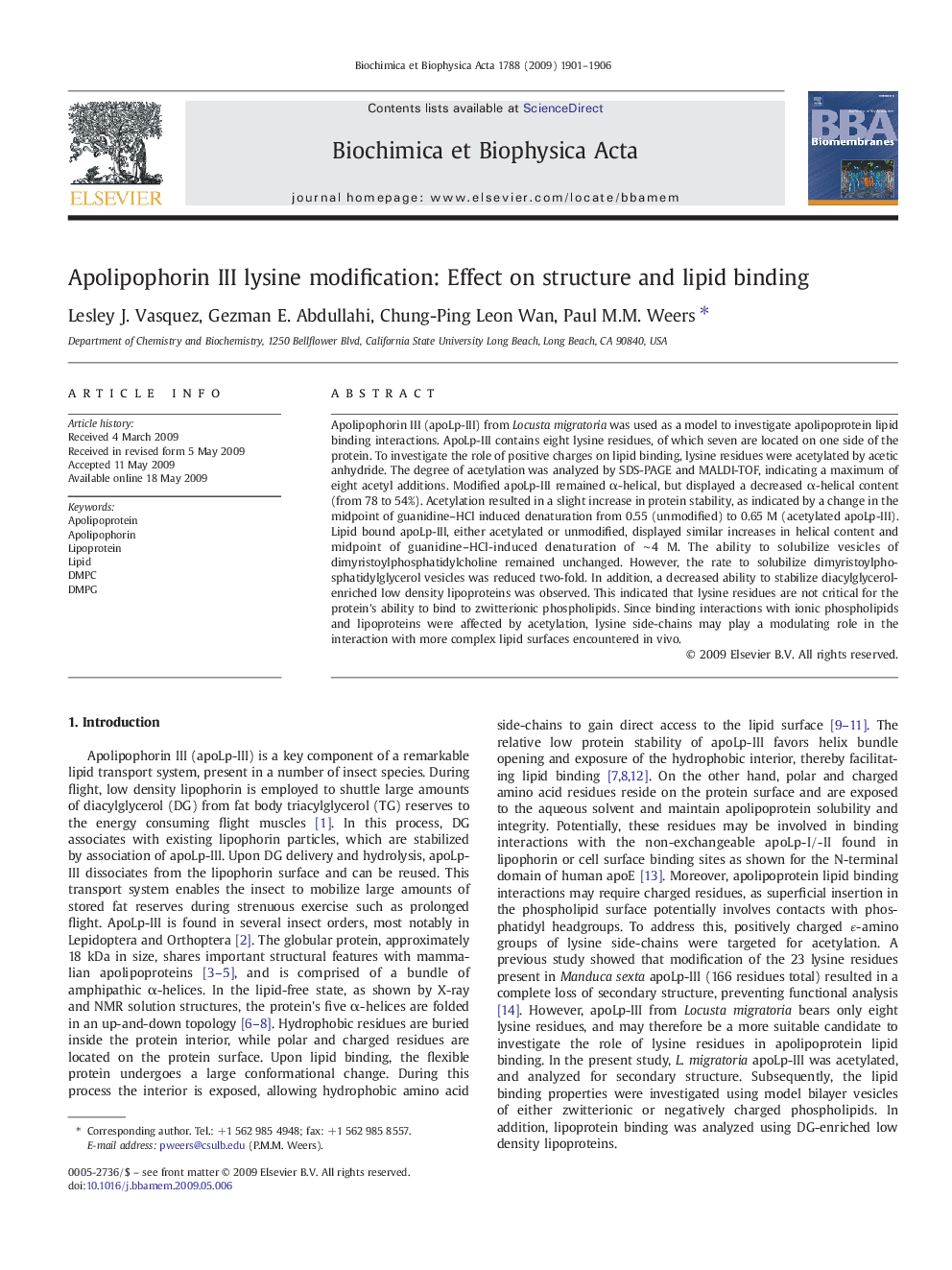| Article ID | Journal | Published Year | Pages | File Type |
|---|---|---|---|---|
| 1944963 | Biochimica et Biophysica Acta (BBA) - Biomembranes | 2009 | 6 Pages |
Apolipophorin III (apoLp-III) from Locusta migratoria was used as a model to investigate apolipoprotein lipid binding interactions. ApoLp-III contains eight lysine residues, of which seven are located on one side of the protein. To investigate the role of positive charges on lipid binding, lysine residues were acetylated by acetic anhydride. The degree of acetylation was analyzed by SDS-PAGE and MALDI-TOF, indicating a maximum of eight acetyl additions. Modified apoLp-III remained α-helical, but displayed a decreased α-helical content (from 78 to 54%). Acetylation resulted in a slight increase in protein stability, as indicated by a change in the midpoint of guanidine–HCl induced denaturation from 0.55 (unmodified) to 0.65 M (acetylated apoLp-III). Lipid bound apoLp-III, either acetylated or unmodified, displayed similar increases in helical content and midpoint of guanidine–HCl-induced denaturation of ∼ 4 M. The ability to solubilize vesicles of dimyristoylphosphatidylcholine remained unchanged. However, the rate to solubilize dimyristoylphosphatidylglycerol vesicles was reduced two-fold. In addition, a decreased ability to stabilize diacylglycerol-enriched low density lipoproteins was observed. This indicated that lysine residues are not critical for the protein's ability to bind to zwitterionic phospholipids. Since binding interactions with ionic phospholipids and lipoproteins were affected by acetylation, lysine side-chains may play a modulating role in the interaction with more complex lipid surfaces encountered in vivo.
